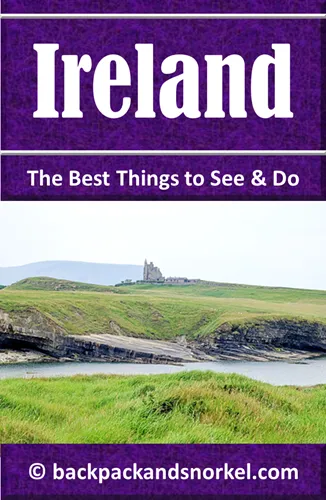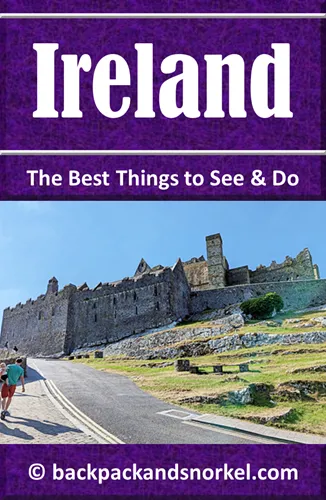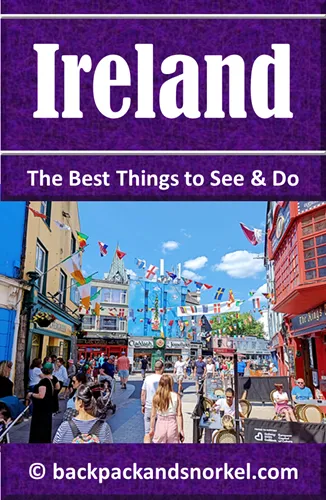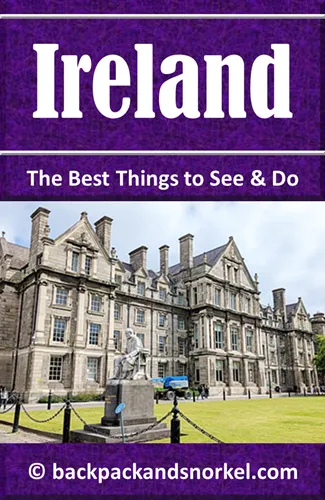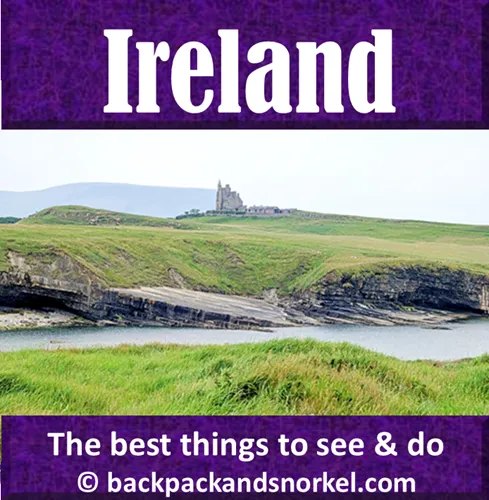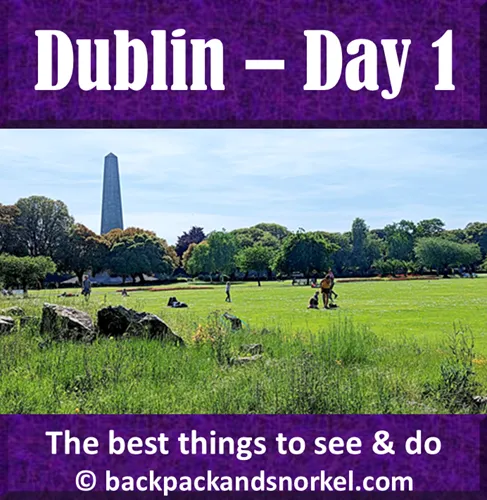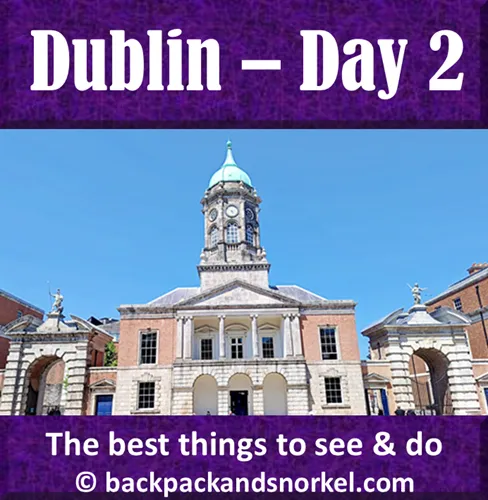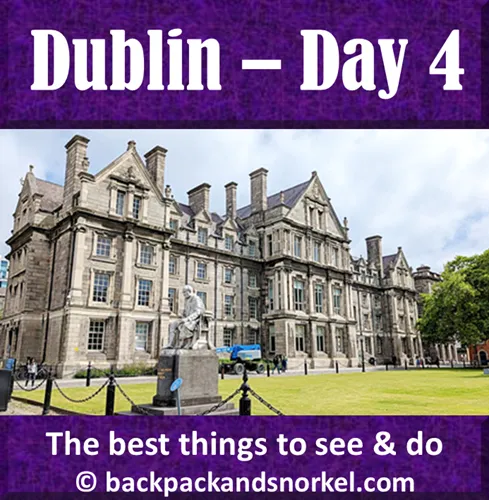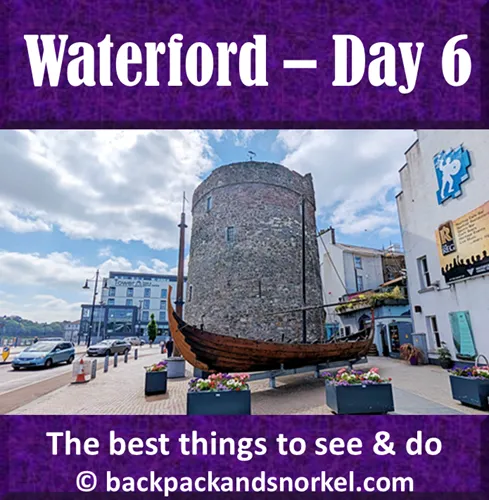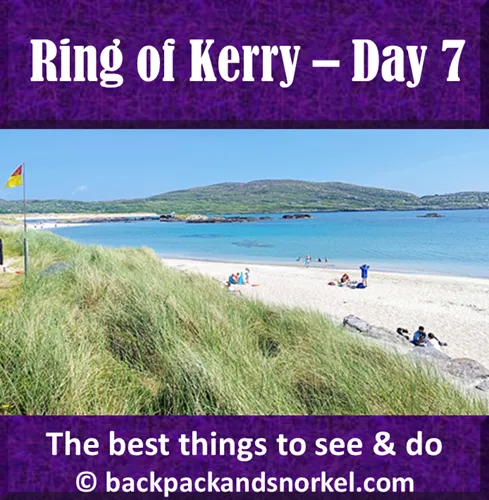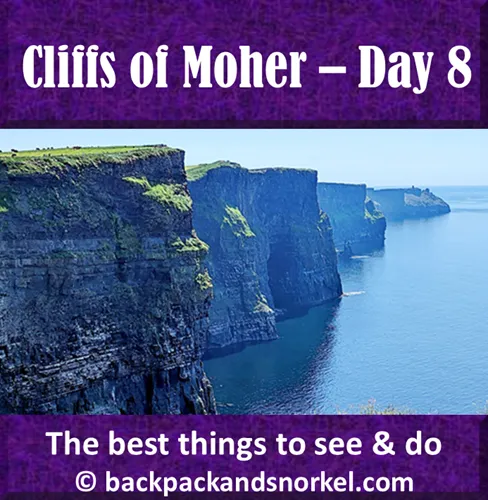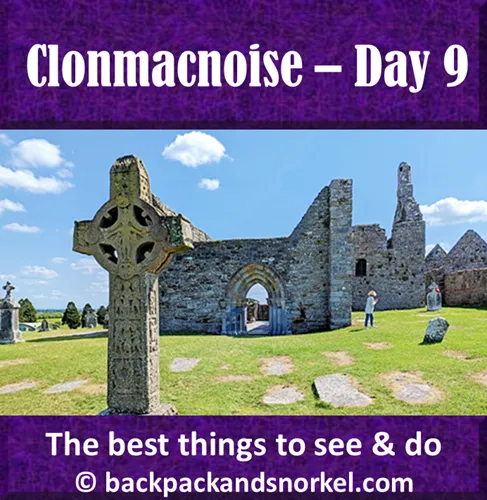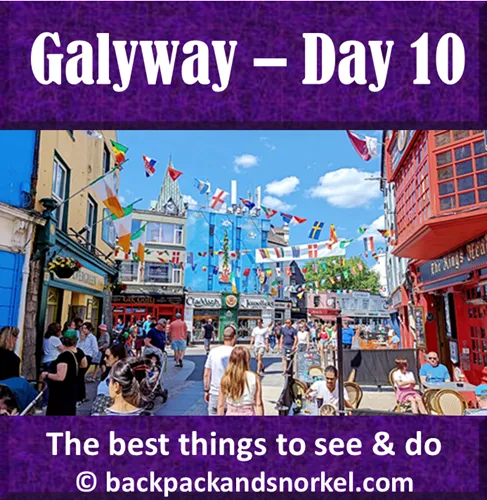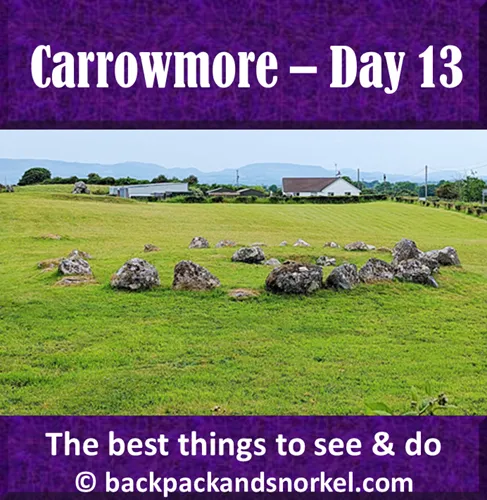Backpack and Snorkel Travel Guide for a Self-Guided Tour of Dublin – Day 4 - Ireland Purple Travel Guide
Today is your last full day in Dublin, and that means we wills ee the remaining highlights of Dublin. We provide detailed information and the best things to see and we show lots of photos so you know what you can expect.
You can either take the same bus as yesterday and walk to Trinity College, or take a bus that brings you to the entrance.
Here at Backpack and Snorkel Travel Guides, we typically promote self-guided walking tours.
But we realize that not everybody likes to walk by themselves in a foreign city. So, just in case that you rather go with ab guide: NO PROBLEM! Please see the free GuruWalk tours below.
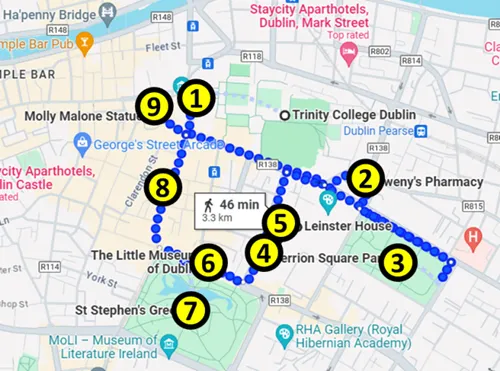
1 = Trinity College Dublin
2 = Sweny's Pharmacy
3 = Merrion Square Park
4 = National Museum of Ireland
5 = Leinster House
6 = The Little Museum of Dublin
7 = St Stephen's Green & St. Stephen's Green Shopping Centre
8 = Grafton Street
9 = Molly Malone Statue
Here at Backpack and Snorkel Travel Guides, we typically promote self-guided walking tours.
But we realize that not everybody likes to walk by themselves in a foreign city. So, just in case that you rather go with ab guide: NO PROBLEM! Please see the free GuruWalk and paid Viator tours below.
free GuruWalk tours
paid Viator tours
Table of contents
Trinity College Dublin and the Book of Kelts
Trinity College is the only college in the University of Dublin. Founded in 1592 by Queen Elizabeth I and modelled after the universities of Oxford and Cambridge, Trinity College is Ireland's oldest university.
Former graduates include famous authors like Oscar Wilde, Jonathan Swift, Bram Stoker (e.g. Dracula), William Trevor, and several Nobel Laureates, Presidents of Ireland, and others.
The main college grounds cover approx. 47 acres (190,000 m2), including approx. 2.2 mio sqft (200,000 m2) for the buildings in downtown Dublin.
You can enter the campus grounds through the gate on Grafton Street.
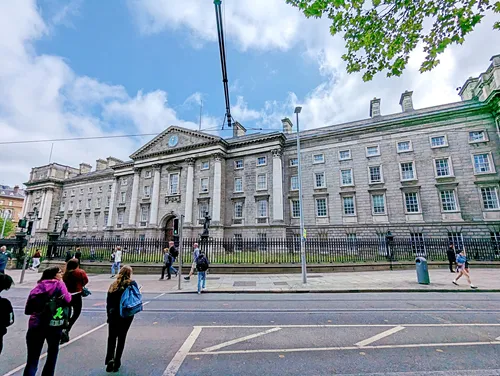
When you visit the campus, enjoy the historic buildings and sculptures (like the Sphere Within Sphere which some call The Death Star).



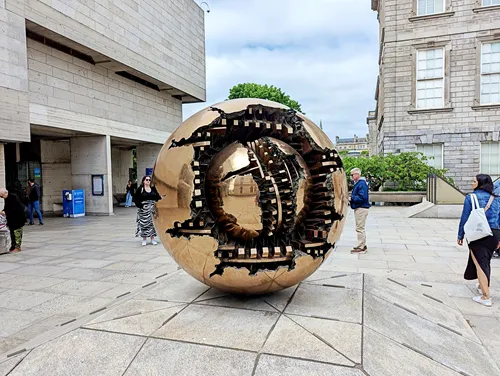
One of the few buildings that you can enter is The Old Library. It was built between 1712 and 1732 and expanded in 1860, and is home to the Long Room and the Book of Kells.
The Long Room is 213 ft (almost 65 m) long and houses about 200,000 of the library’s oldest books.
Remark: In 2023, all 200,000 books, including one of the few remaining copies of the 1916 Proclamation of the Irish Republic, which was read outside the General Post Office, were removed in an effort to prevent further degradation, and conserve them. It is not clear when they will be returned.
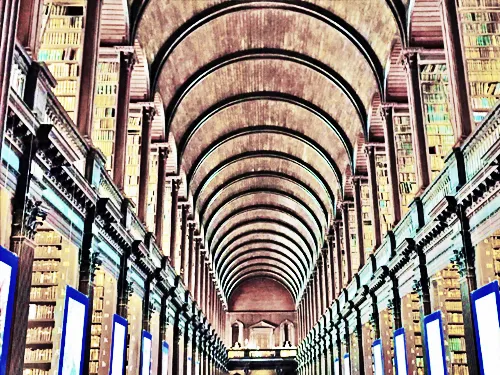
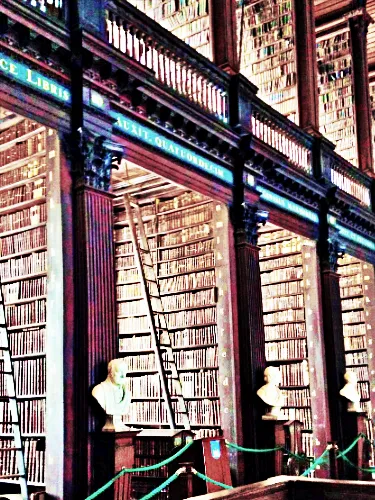
The major highlight, however, is The Book of Kells. The Book of Kells was created in a Columban monastery in either Ireland or Scotland likely at around 800 AD.
It contains the four Gospels of the New Testament on 340 leaves (680 pages) and is regarded as a masterwork of Western calligraphy – its illustrations and ornamentation surpasses comparable gospel books in extravagance and complexity. When you visit, you can only see 2 pages – no photography or videography is allowed. The pages are rotated every 12 weeks. You can view the whole book online.
The book is named after the Abbey of Kells (County Meath) where it was located for likely over six centuries.
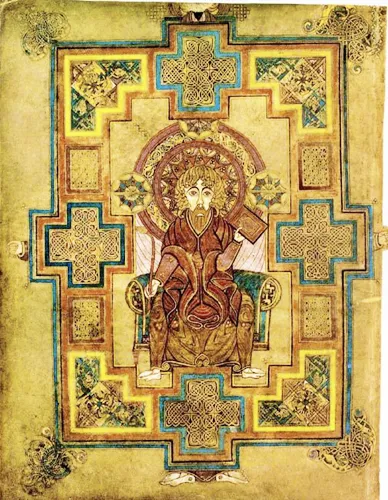
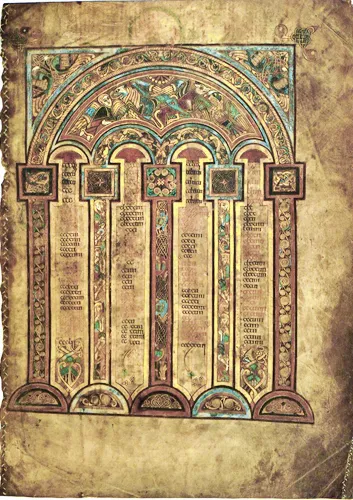
Sweny's Pharmacy
Sweny's Pharmacy was popularized after appearing in James Joyce's 1922 novel Ulysses.
Every year, on June 16, Joyce’s fans celebrate Bloomsday here. June 16 is the day on which Ulysses takes place (in 1904) and the date of his first sexual encounter with his future wife Nora Barnacle. The day is named after protagonist Leopold Bloom and is celebrated since 1924.
In the book Ulysses, Leopold Bloom buys a bar of lemon soap while waiting for his prescription in the pharmacy. Even though Sweny's Pharmacy is a bookstore nowadays, Lemon soap can still be purchased here.
The building was constructed in 1847 and the room that is now Sweny's Pharmacy was first used as a waiting room for patients. Later it was converted to an apothecary and in 1852, it was used by pharmacist Frederick William Sweny, who also lived in the house, as a pharmacy. Physician Mark Sweny took over in 1862.
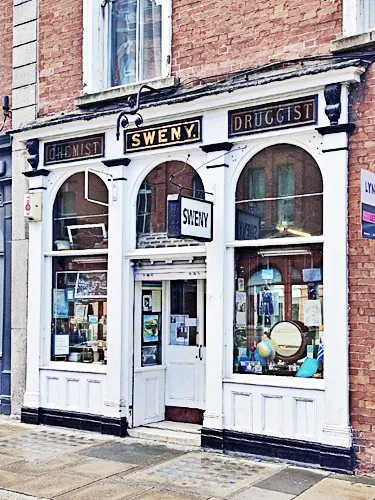
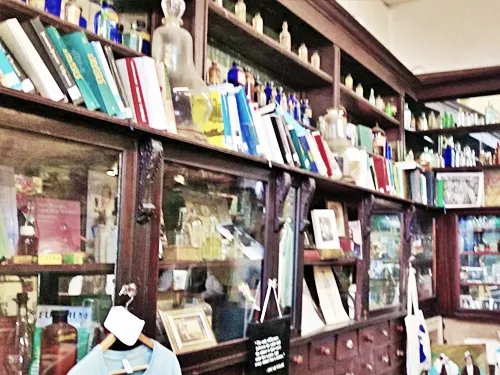
Merrion Square Park
In 1974 the City of Dublin took over Merrion Square Park. Before, it was privately owned and only accessible to residents of the nearby historic Georgian townhouse residences of Merrion Square.
Almost all historic houses at Merrion Square were built between 1762 and 1800 and many notable Irish personalities lived here. Among them are:
- poet, novelist, and satirist Oscar Wilde lived in #1
- the British Embassy was based at #39 until it was burned down by protesters the after the Bloody Sunday shootings in 1972
- politician Daniel O'Connell lived in #58
- fashion and interior designer Sybil Connolly lived in #71
- poet W. B. Yeats lived in #82
- physicist and mathematician John Lighton Synge who created a new geometrical approach to the theory of relativity lived here

The park is home to several sculptures.

1 = The Joker's Chair
2 = Oscar Wilde Memorial
3 = War Memorial
4 = Merrion Square Park Sculpture
5 = Michael Collins Statue
6 = The Victims
7 = Eire Statue
8 = Bernardo O'Higgins
(2) Oscar Wilde Memorial

(3) War Memorial
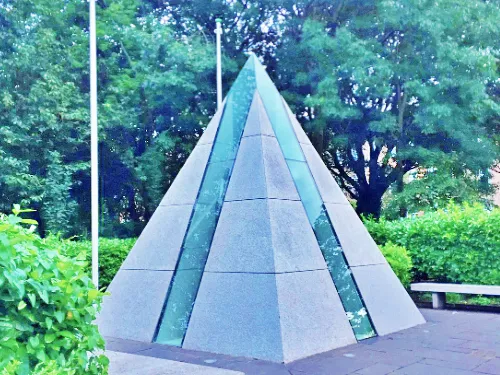
(6) The Victims
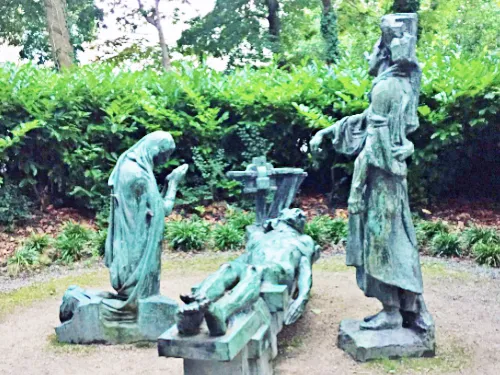
National Museum of Ireland - Archaeology
Established in 1877, the National Museum of Ireland was formed by combining existing collections primarily of the Royal Dublin Society and the Royal Irish Academy, the National Museum is Ireland's leading museum institution.
The National Museum of Ireland has three branches in Dublin, the archaeology branch, the natural history branch, and a newer Decorative Arts and History branch. The fourth branch, Country Life, is located in Castlebar.
The National Museum of Ireland - Archaeology moved into the current building in 1890 after its collection outgrew its old building.
Its collection contains artifacts from:
- prehistoric Ireland including bog bodies, Iron and Bronze Age objects (e.g. axe-heads, swords and shields made of bronze, silver, and gold). The oldest artefacts date back to 7,000 BC
- the world's most substantial collection of post-Roman era Irish medieval art
- a substantial collection of medieval metalwork, Viking artefacts like swords and coins
- objects from Ancient Egypt, Cyprus, and the Roman empire
What draws the most visitors, however, is the extensive collection of historic artefacts made of gold.
Admission to the museum is free and, at the time of writing, the museum is open Tuesdays through Saturdays from 10am until 5pm, from July through October until 8pm and on Sundays from 1-5pm.

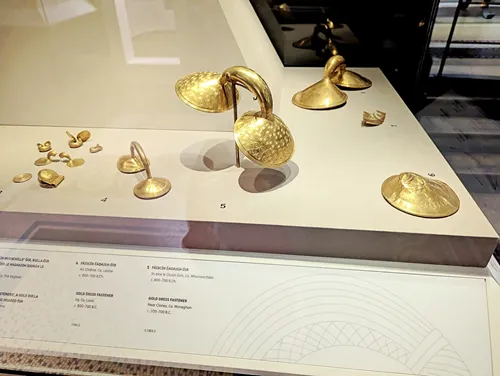

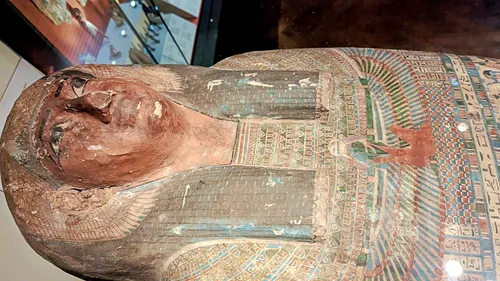
Leinster House
Built in 1748, Leinster House was built for the Earl of Kildare and at that time was called Kildare House. In 1766, the Earl became the first Duke of Leinster and the building became the palace of the Dukes of Leinster and the name was changed to Leinster House.
The first and second floors of the building were used as floor models for the White House in Washington, DC by its Irish architect James Hoban, and the house itself was used as a model for the exterior of the White House.
The house was sold to the Royal Dublin Society in 1815.
In 1922, Leinster House was rented for the parliament of the Irish Free State, which had met in various other locations before, until a permanent solution was found. Due to financial constraints, in 1924, Leinster House was named the permanent home of the parliament and various renovations were undertaken and additions were built.
Leinster House used to be open for visitors. At the time of writing, only tours sponsored by a Member of Parliament or Senator are permitted.



The Little Museum of Dublin
The Little Museum of Dublin is a small history museum that focuses on life in Dublin during the 20th century. With its collection of over 5,000 artefacts featuring e.g. the 1916 Rising, US President John F. Kennedy's Dublin visit, the rock band U2, etc.. The museum is located in an 18th-century Georgian townhouse and is open daily from 9am – 5pm. Its famous guided tours are given by funny and super-knowledgeable guides on top of each hour and cost €15 per adult at the time of writing.
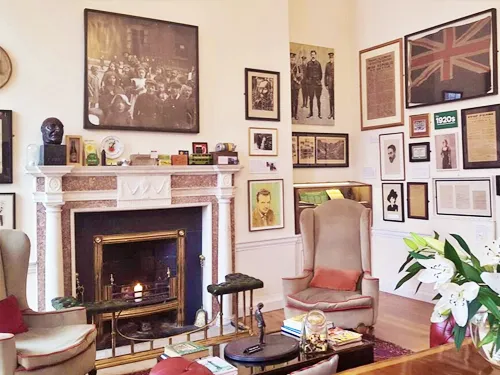
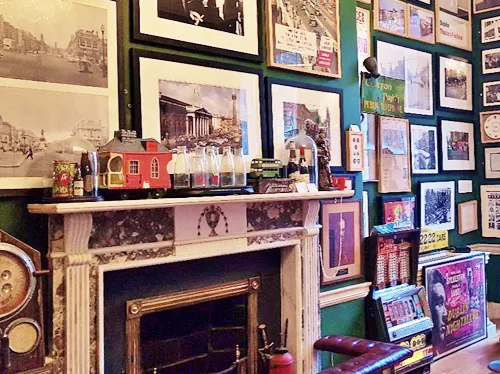
St. Stephen's Green
The area that is now covered by St. Stephen's Green used to be marshy grasslands. What is now the park was enclosed in 1664 with a wall and land around it was sold to generate revenue for the city. In 1814, the wall was replaced with railings, but access was still restricted to local residents. It took until 1877 until the park was opened to the public.
Sir A.E. Guinness paid for the redevelopment of the park, which opened in 1880 and its layout is close to what you see today.
During the Easter Rising of 1916, 200-250 members of the Irish Citizen Army dug defensive positions in the park and gunfights occurred. For a short time, gunfire was temporarily halted to allow a park's groundskeeper to feed the ducks.
St. Stephen's Green covers 22 acres (8.9 ha) and that makes it Dublin’s largest park.
The streets surrounding this rectangular park are called St Stephen's Green North, St Stephen's Green East, St Stephen's Green South, and, you guessed it, St Stephen's Green West.
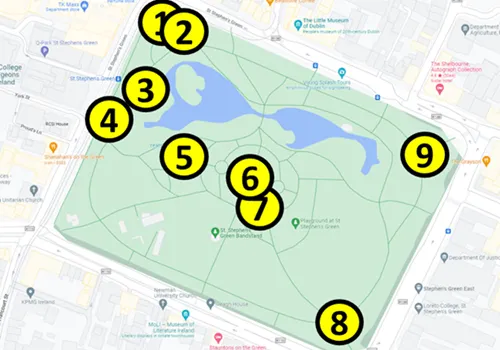
1 = Fusiliers’ Arch
2 = Jeremiah O'Donovan Rossa memorial
3 = Robert Emmet statue
4 = Statue of Lord Ardilaun statue
5 = Yeats memorial garden & Henry Moore sculpture
6 = St Stephen's Green
7 = Countess Markievicz bust
8 = Three Fates Fountain
9 = WolfeTone & Famine Memorial
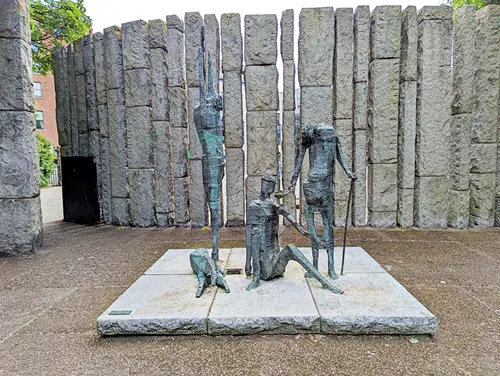
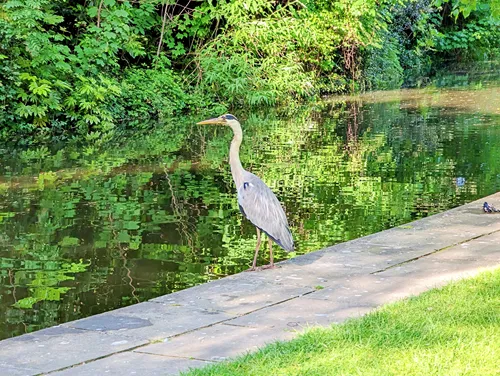

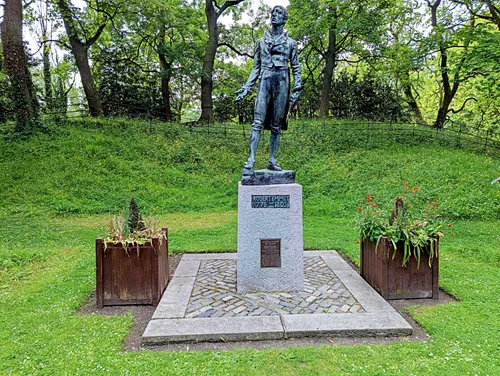
St. Stephen's Green Shopping Centre
Located across the street from the northwestern corner of the St. Stephen’s Green Park and Grafton Street, St. Stephen's Green Shopping Centre sits on a site that was occupied mostly by Georgian homes until the early 1980s. During the recession in the late 1970s, the site became known for its Dandelion Market with its alternative vendors, which made it popular with younger people and that attracted Irish rock band U2 who played some of their earliest gigs at the market.
The site changed owners a few times and in 1986 work started on the St. Stephen's Green Shopping Centre that you see today.
The building is sometimes called ‘The Wedding Cake’ and some people say it looks a like a Mississippi steamboat that is moored on the edge of the St. Stephen’s Green Park.
The beautiful architecture makes this shopping mall a deserving stop on your tour of Dublin.


Grafton Street
Grafton Street is one of the two pedestrian shopping streets in Dublin - the other one is Henry Street. It starts where St. Stephen's Green Park and St. Stephen's Green Shopping Centre meet and then runs north to Trinity College.
Starting in 1708 an existing country lane, which existed where Grafton Street is now, was widened and from 1712 - 1727, the road was developed into a ‘crown causeway’ with mixed residential and commercial establishments.
Over time, the street and surrounding buildings were rebuilt and by the second half of the 19th century, the street was mostly commercial.
In the mid-1800s, several buildings on Grafton Street were neglected, but in the 1860s several new merchants moved here. At about the same time and all the way until the end of the century, the street was busy with prostitution.
With more than 3,200 arrests for prostitution, Dublin had almost 50% more arrests than London (almost 2,200). This did not hurt tourism in this area, however.
The 1900s and 2000s were an era of progress on Grafton Street:
- 1911: King George V and Queen Mary lead a procession on Grafton Street
- 1914: US retail chain Woolworth's opens a store
- 1971: Grafton Street is congested with cars and buses that pollute the air. The street is made pedestrian-only for 4 weeks on a trial basis
- 1977: the first Irish McDonald's restaurant opens
- 1982: the street is permanently made pedestrian-only (except for the northern end)
- 1980s: several British retailers open stores. Among them are: HMV, Marks & Spencer, Miss Selfridge, Next, River Island
- 1980s: Grafton Street is known for street performers (buskers) like musicians, poets, and mimes, among them was Bono from U2 on Christmas Eve 2018
- 1988: the street is modernized: repaved and new lighting fixtures installed
- 2008: Grafton Street is the fifth most expensive main shopping street in the world – average rental prices are €5,621/m2/year
- 2016: Grafton Street is the 13th most expensive main shopping street in the world – average rental prices are €3,300/m2/year
The northern end of Grafton Street was the original location of the Molly Malone Statue.

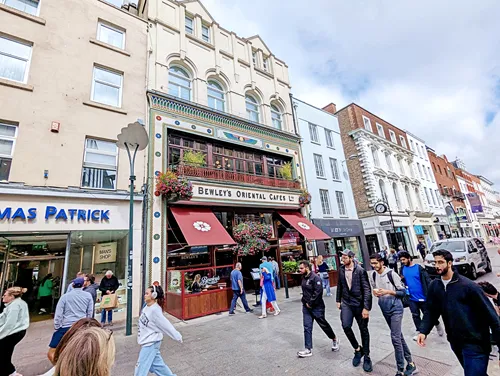
Molly Malone Statue
Molly Malone is a fictional character from a song that depicts her life in Dublin – it is sometimes considered Dublin’s unofficial anthem. Molly is earning a living by selling fish from her cart in the streets of Dublin and she and a fever eventually kills her while she is still young. The song was first published in Boston (USA) in 1876 in a book with many other songs and it suggests an Irish origin. Independently, the song was also published in 1884 in London (UK) with a reference to a Scottish composer. Even though, Molly Malone is most likely a fictional character and not based on any person, the Dublin Millennium Commission endorsed a claim in 1988, without any credible proof, that Molly did exist under the name Mary Malone and died on June 13, 1699. Thus Molly Malone Day was proclaimed on June 13.
The Molly Malone statue that you see today was originally unveiled on the southern end of Grafton Street during the 1988 Dublin Millennium celebration. Due to the construction of the tram, the statue was refurbished and relocated to its current location in 2014.
Molly’s statue depicts her as a young woman in traditional clothes and her cart selling fish and with a big cleavage. This is, because Molly is typically represented as a hawker by day and a part-time prostitute by night. In the past, apparently, some people began rubbing the statue's bosom area ‘for luck’.
Naturally, Dubliners have come up with a number of nicknames for the statue, like:
- Cockles and Mussels
- In Dublin's Fair City
- The dish with the fish
- The dish with the fish
- The tart with the cart
- The trollop with the scallops


Where do you want to go now?
Other popular Purple Travel Guides you may be interested in:
Like this Backpack and Snorkel Purple Travel Guide? Pin these for later:
